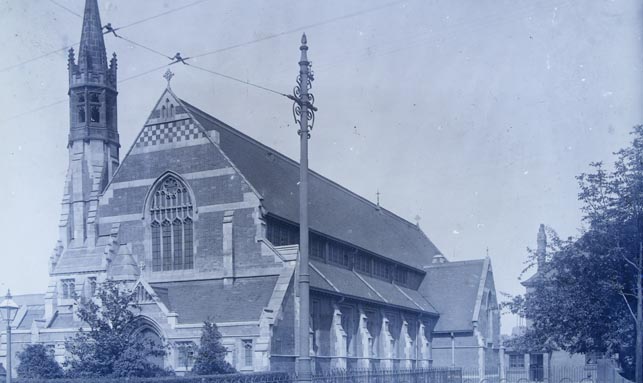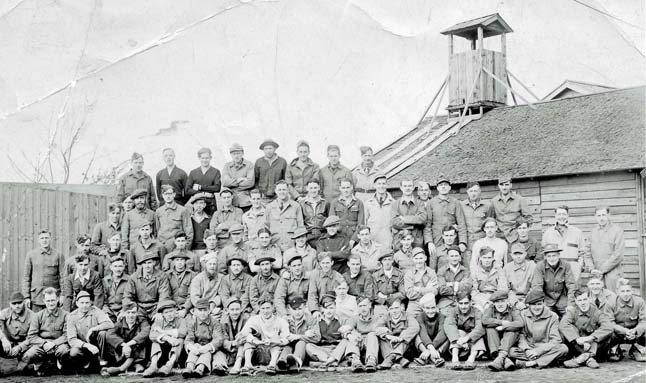- The buildings that house Makers Yard form the earliest surviving example of an unpowered hosiery factory in the East Midlands
- It now houses a number of creative business units while retaining a lot of the original industrial features
- The last firm to occupy the building, Charnwood Hosiery, made military socks for the Falklands War as well as sports socks
One of the earliest hosiery factories in Britain
The buildings at 82-86 Rutland Street, now Makers Yard, form the earliest surviving example of an unpowered hosiery factory in the East Midlands. They were originally built in stages between 1854 and 1863 for J. Brown and Sons, a hosiery manufacturer specialising in gloves. In contrast to some of the magnificent neighbouring warehouse buildings, which were built later in Rutland Street, the buildings from 82 to 86 Rutland Street were not designed by architects.
Home working to factory mass production
The buildings of Makers Yard show how the hosiery trade changed from a home-based to a factory-based industry. The door and two windows to the right of the building were part of the original warehouse built in the mid-1850s This was used for storage and distribution of items made by outworkers in their own homes. Knitters left their homes and came to work in the three storey factory building at the rear of the site once it was completed in 1860. Although the factory was not powered, it was heated as each factory floor had a fireplace at the end and fire doors which prevented fire spreading to the warehouse. The windows in the factory are larger than in the warehouse to maximise light for the knitters. As the success of the building grew, a second warehouse, fronting onto Rutland Street and with carriage access to the left, was added in 1862-3.
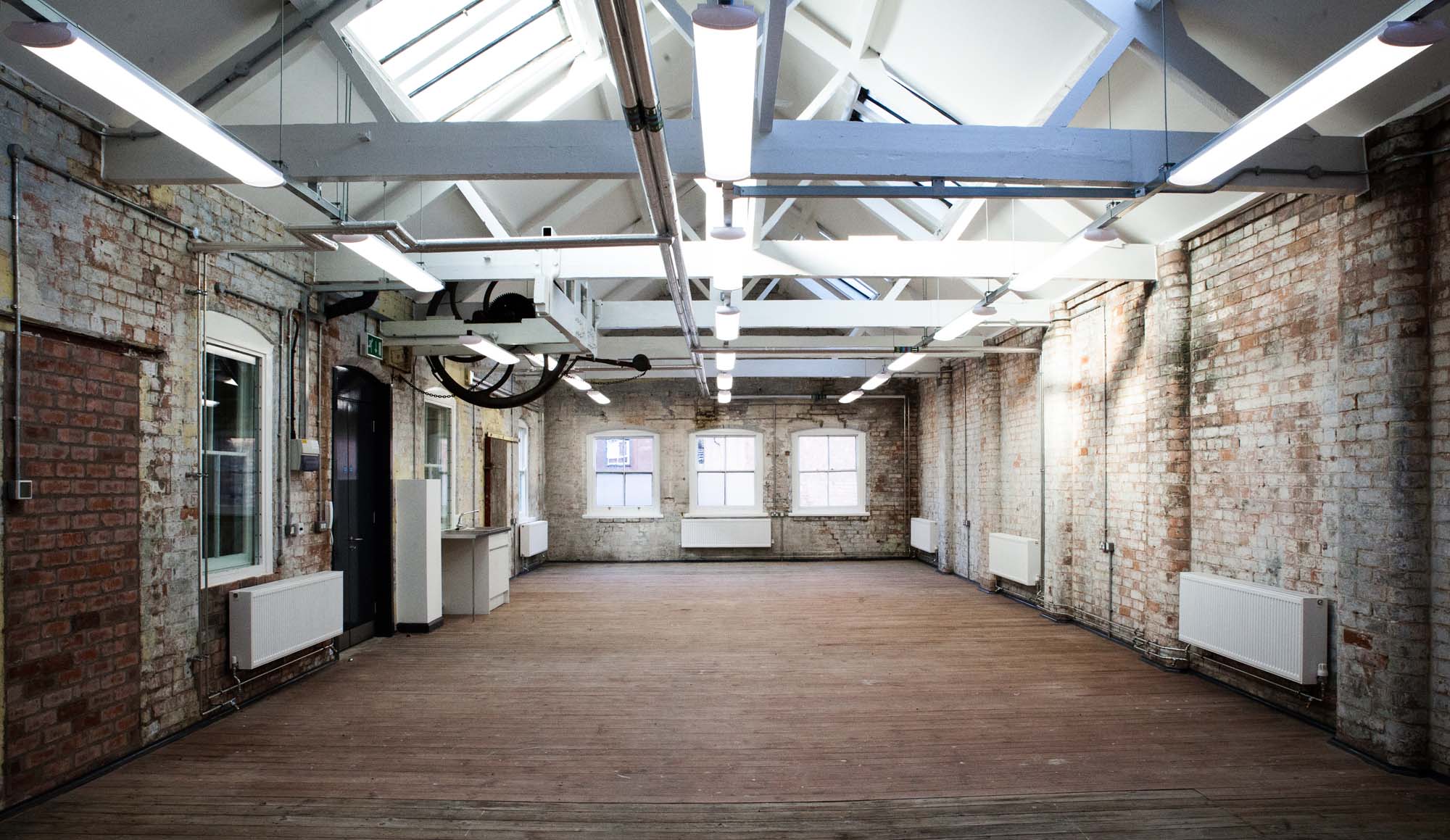
Later owners
By the 1890s J. Brown and Sons had left Rutland Street. The building continued to be used by three smaller firms – Wilkinson Leather; Briggs and Sons, boot manufacturers, and Holland and Co., paper bag makers. Shared usage of the building, mainly by small firms related to the leather industry, continued into the twentieth century. In 1912, for example, it was occupied by a mix of small individual leather merchants, the Anglo-American Chemical Company and an engineer. From the 1920s there was a little more stability in the tenancy with leather factors company Townsend, Hunt and Co. in occupation from 1925 until the firm was dissolved in 1970. From 1936 to the late 1950s they were joined by Pebody & Muston Ltd, leather factors, and from 1947 to the early 1960s there was also a small engraving business called A & G Edginton.
Makers Yard today
In the early 2000s Charnwood Hosiery ceased trading and the buildings were empty and at risk of demolition. The historic significance of the buildings was recognised in 2006 when they were awarded Grade II listing status; however, they still remained in a vacant and dilapidated state. In 2012 the City Council began to regenerate the site in partnership with the European Regional Development Fund. The buildings have been modernised and renamed Makers Yard. Many of the original features of the site’s industrial heritage and have been maintained and it now houses 10 studios providing workspace for a range of creative entrepreneurs.
Full details of the creative businesses currently operating from Makers Yard and details of public events held in the building can be found on the Makers Yard website.
Gallery

Makers Yard
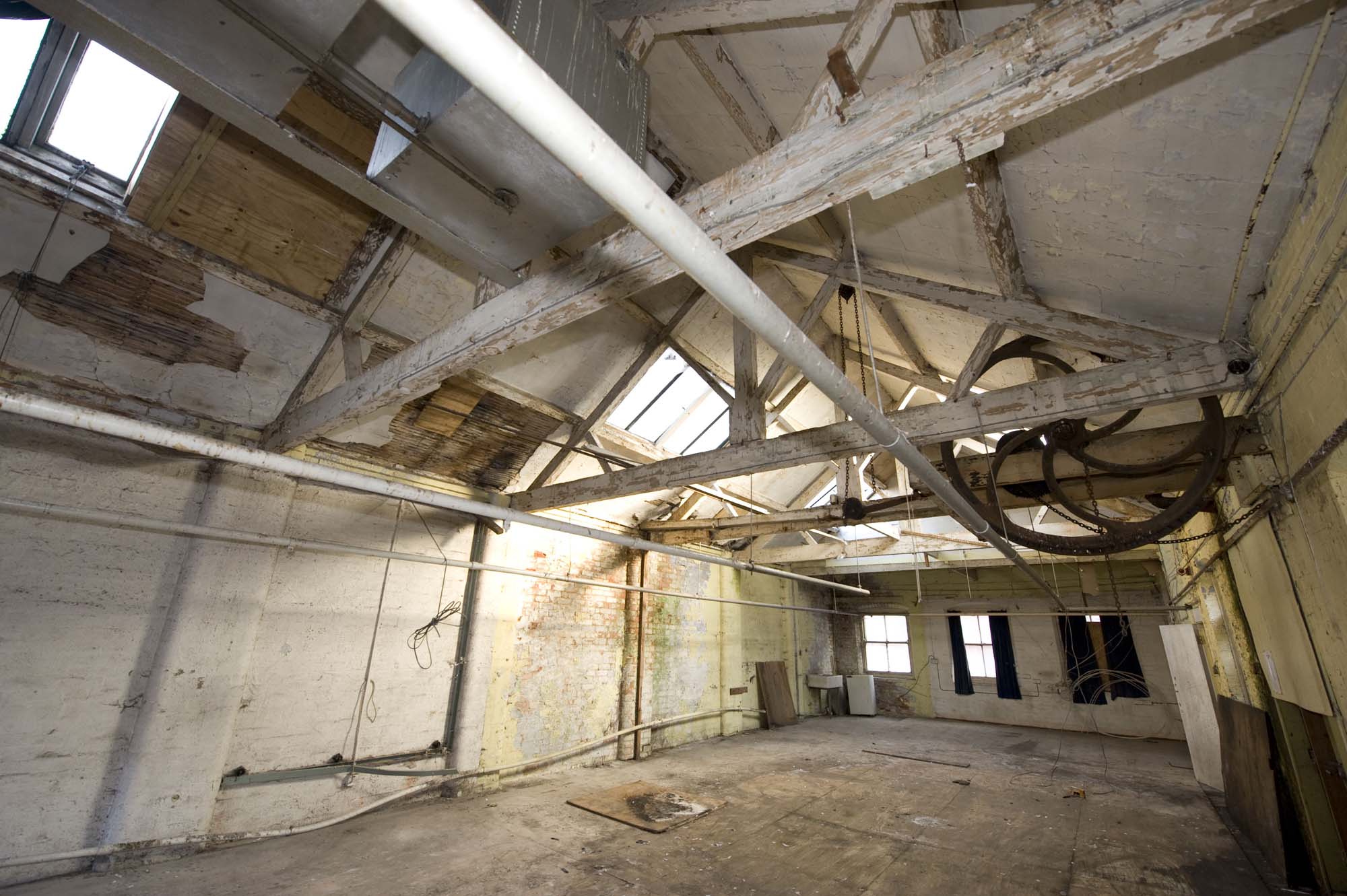
Makers Yard

Makers Yard
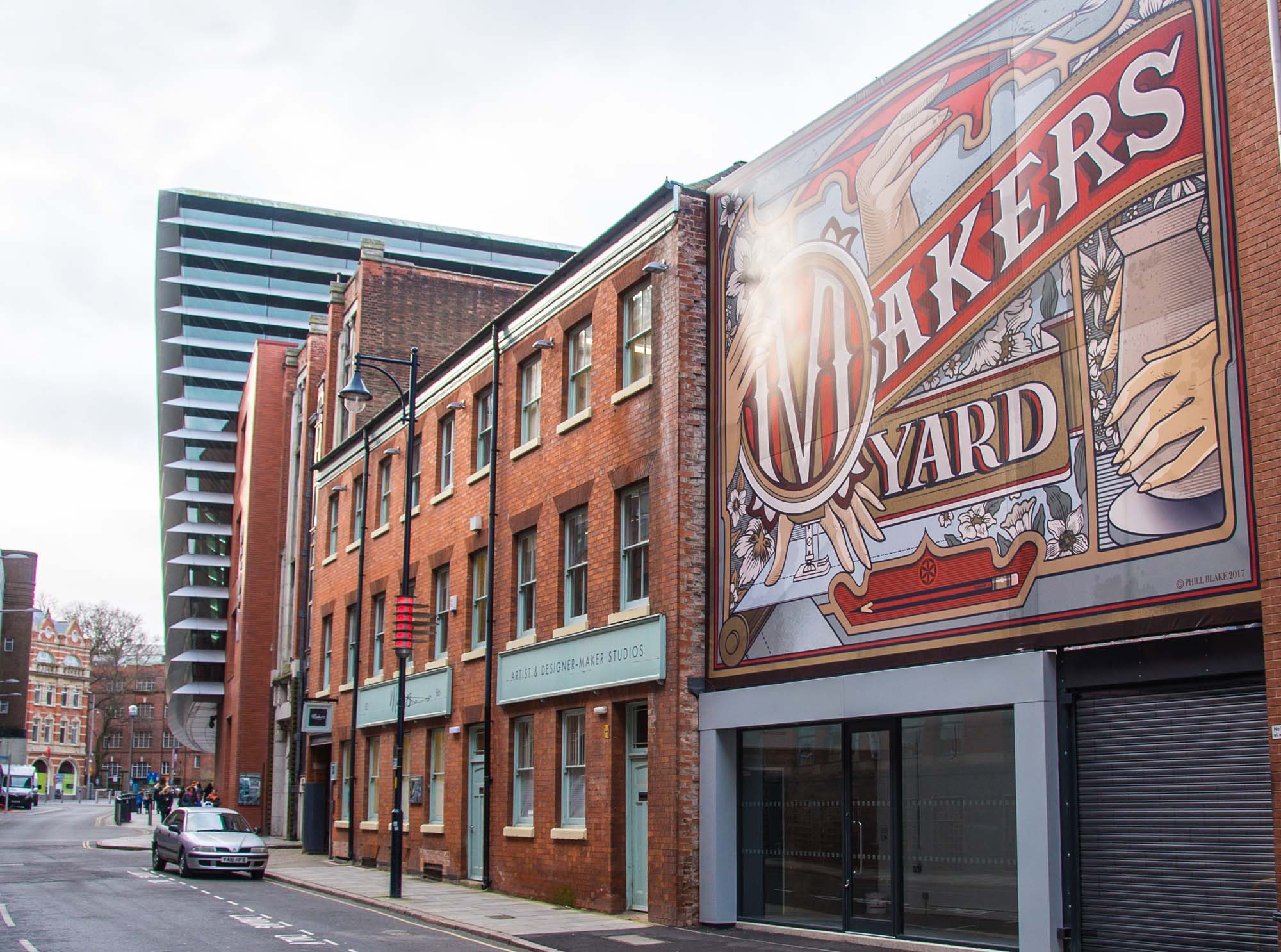
Roman Leicester
(47- 500) A military fort was erected, attracting traders and a growing civilian community to Leicester (known as Ratae Corieltauvorum to the Romans). The town steadily grew throughout the reign of the Romans.
Medieval Leicester
(500 – 1500) The early years of this period was one of unrest with Saxon, Danes and Norman invaders having their influences over the town. Later, of course, came Richard III and the final battle of the Wars of the Roses was fought on Leicester’s doorstep.
-
The Castle Motte1068

-
Leicester Cathedral1086

-
St Mary de Castro1107

-
Leicester Abbey1138

-
Leicester Castle1150

-
Grey Friars1231

-
The Streets of Medieval Leicester1265

-
Leicester Market1298

-
Trinity Hospital and Chapel1330

-
Bow Bridgecirca 1350

-
Church of the Annunciation1353

-
John O’Gaunt’s Cellar1361

-
Leicester Guildhall1390

-
The Magazine1400

-
The Blue Boar Inn1400

-
The High Cross1577

Tudor & Stuart Leicester
(1500 – 1700) The wool trade flourished in Leicester with one local, a former mayor named William Wigston, making his fortune. During the English Civil War a bloody battle was fought as the forces of King Charles I laid siege to the town.
Georgian Leicester
(1700 – 1837) The knitting industry had really stared to take hold and Leicester was fast becoming the main centre of hosiery manufacture in Britain. This new prosperity was reflected throughout the town with broader, paved streets lined with elegant brick buildings and genteel residences.
-
Great Meeting Unitarian Chapel1708

-
The Globe1720

-
17 Friar Lane1759

-
Leicester Royal Infirmary1771

-
New Walk1785

-
Freemasons’ Hall1790

-
Gaols in the City1791

-
Friars Mill1794

-
City Rooms1800

-
Development of Highfields1800

-
Wesleyan Chapel1815

-
20 Glebe Street1820

-
Charles Street Baptist Chapel1830

-
Glenfield Tunnel1832

Victorian Leicester
(1837 – 1901) The industrial revolution had a huge effect on Leicester resulting in the population growing from 40,000 to 212,000 during this period. Many of Leicester's most iconic buildings were erected during this time as wealthy Victorians made their mark on the town.
-
Leicester Union Workhouse1839

-
Campbell Street and London Road Railway Stations1840

-
The Vulcan Works1842

-
Belvoir Street Chapel1845

-
Welford Road Cemetery1849

-
Leicester Museum & Art Gallery1849

-
King Street1850

-
Cook’s Temperance Hall & Hotel1853

-
Amos Sherriff1856

-
Weighbridge Toll Collector’s House1860

-
4 Belmont Villas1862

-
Top Hat Terrace1864

-
Corah and Sons - St Margaret's Works1865

-
Kirby & West Dairy1865

-
The Clock Tower1868

-
Wimbledon Works1870

-
The Leicestershire Banking Company1871

-
St Mark’s Church and School1872

-
Victorian Turkish Baths1872

-
The Town Hall1876

-
Aylestone Road Gas Works and Gas Museum1879

-
Gas Workers Cottages1879

-
Leicestershire County Cricket Club1879

-
Welford Road Tigers Rugby Club1880

-
Secular Hall1881

-
Development of Highfields1800

-
Abbey Park1881

-
Abbey Park Buildings1881

-
Victoria Park and Lutyens War Memorial1883

-
Leicester Fosse FC 18841884

-
Leicester Coffee and Cocoa Company Coffee Houses1885

-
St Barnabas Church and Vicarage1886

-
Abbey Pumping Station1891

-
Luke Turner & Co. Ltd.1893

-
West Bridge Station1893

-
Thomas Cook Building1894

-
Alexandra House1897

-
Leicester Boys Club1897

-
Grand Hotel and General Newsroom1898

-
Highfield Street Synagogue1898

-
Western Park1899

-
Asfordby Street Police Station1899

-
Leicester Central Railway Station1899

Edwardian Leicester
(1901 – 1910) Electric trams came to the streets of Leicester and increased literacy among the citizens led to many becoming politicised. The famous 1905 ‘March of the Unemployed to London’ left from Leicester market when 30,000 people came to witness the historic event.
Early 20th Century Leicester
(1910 – 1973) The diverse industrial base meant Leicester was able to cope with the economic challenges of the 1920s and 1930s. New light engineering businesses, such as typewriter and scientific instrument making, complemented the more traditional industries of hosiery and footwear manufacturing.
-
Dryad Handicrafts1912

-
De Montfort Hall1913

-
Leicester During the First World War1914

-
Fox’s Glacier Mints1918

-
Statue of Liberty1919

-
Housing in Saffron Lane1924

-
Housing in North Braunstone1926

-
Lancaster Road Fire Station1927

-
The Little Theatre1930

-
Saffron Hill Cemetery1931

-
Braunstone Hall Junior School1932

-
Former City Police Headquarters1933

-
Savoy Cinema1937

-
City Hall1938

-
Athena - The Odeon Cinema1938

-
The Blitz in Highfields1940

-
Freeman, Hardy and Willis - Leicester Blitz1940

-
Leicester’s Windrush Generations1948

-
Housing at Eyres Monsell1951

-
Silver Street and The Lanes1960

-
Auto-Magic Car Park (Lee Circle)1961

-
University of Leicester Engineering Building1963

-
Sue Townsend Theatre1963

-
Central Mosque1968

Modern Leicester
(1973 – present day) Industry was still thriving in the city during the 1970s, with the work opportunities attracting many immigrants from all over the world. While industry has declined in recent years, excellent transport links have made Leicester an attractive centre for many businesses. The City now has much to be proud of including its sporting achievements and the richness of its cultural heritage and diversity.
-
Haymarket Theatre1973

-
The Golden Mile1974

-
Acting Up Against AIDS1976

-
Belgrave Neighbourhood Centre1977

-
Diwali in Leicester1983

-
Leicester Caribbean Carnival1985

-
Samworth Brothers1986

-
Jain Centre1988

-
Guru Nanak Dev Ji Gurdwara1989

-
King Power Stadium2002

-
LCB Depot2004

-
Curve2008

-
BAPS Shri Swaminarayan Mandir2011

-
Makers Yard2012

-
VJ75 Day2020

- Roman Leicester
- Medieval Leicester
- Tudor & Stuart Leicester
- Georgian Leicester
- Victorian Leicester
- Edwardian Leicester
- Early 20th Century Leicester
- Modern Leicester
A Working Town









































































